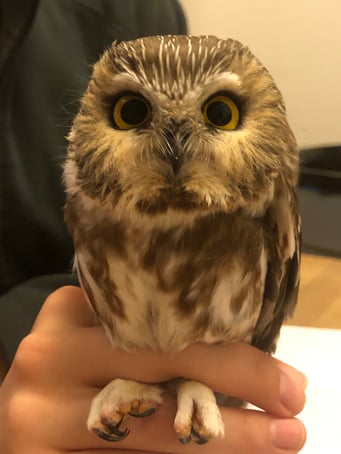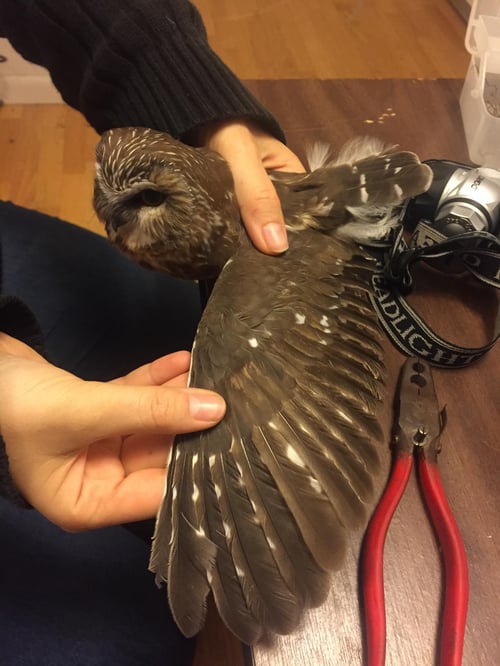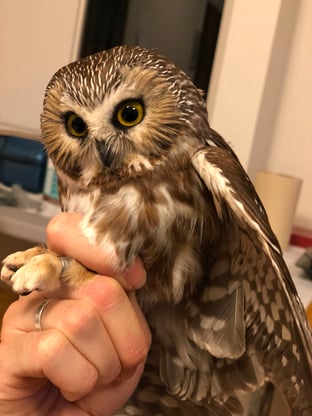Autumn’s north winds, cold temperatures and long dark nights are what Northern Saw-whet Owl bander’s dream about. Like many other bird species, Northern Saw-whet Owls begin their southern migration to warmer winter ranges when autumn comes. As a former bird banding research assistant, the end of September meant preparing our banding site, near Upstate New York, for the arrival of migrating owls from more northern latitudes such as Canada or more northern states.
 Northern Saw-whet Owl
Northern Saw-whet Owl.jpg?width=371&name=CBelardo_NSWO1%20(1).jpg) Owls in cans
Owls in cansA series of measurements were taken of each owl: age, sex, weight, wing length, wing arc length and tail length. A uniquely numbered aluminum leg band was fitted onto the leg and released back into the night to continue their migration journey. The information gathered is submitted online to BBL for research use for publication in scientific journals and public education.
It is rare for an individual to encounter a banded bird. However, if you do see a bird that has been previously banded, it is essential to the success of the bird banding program that you report the bird to BBL. It can be interesting to learn where the bird was originally banded and when/how long it took for it to travel to where you found the bird.
 Owl Expanded Wing
Owl Expanded Wing
According to BBL, from 2011-2021, 376 Northern Saw-whet Owls were banded in Colorado (10 in 2021). 7 of which were encountered a year or two later, including one that was banded in 2012 and encountered four years later all the way in Pennsylvania! Toot toot toot!

Saw-whet Owl
Christina Belardo is the Girls in Science Manager at Walking Mountains Science Center and a former bird banding assistant back in upstate New York. In her free time, she is a scientific illustrator exploring the outdoors through pens and a sketch pad.









